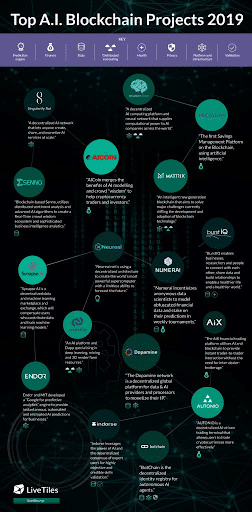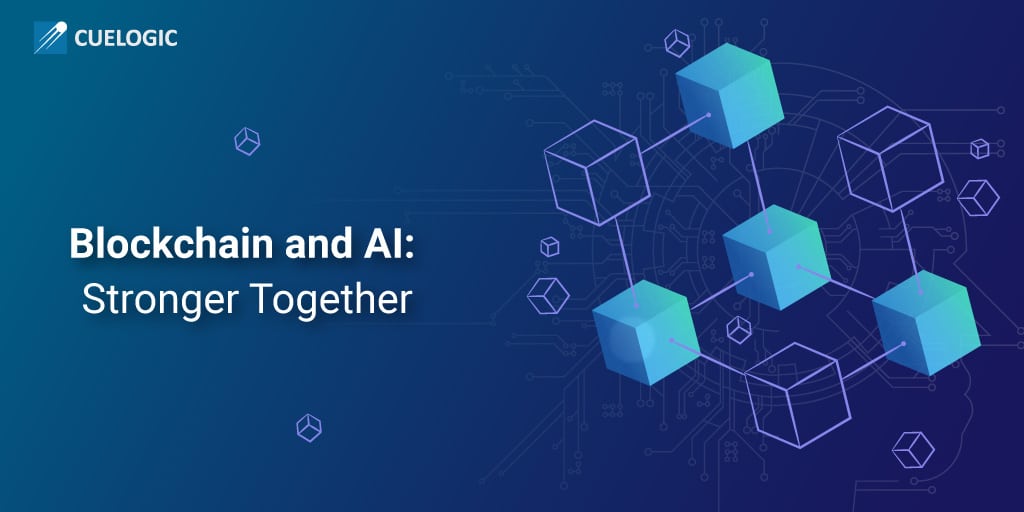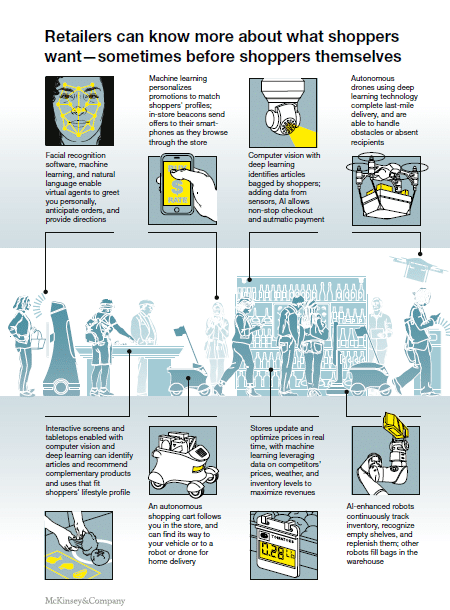How and why do Blockchain and AI work together so well?
Technology is emerging by several leaps and folds each day. With the aim to make lives better, there have been major developments in software technology over the last two decades. This has made technology an inevitable part of our modern lives, where the common daily chores are improvised using technologies such as Artificial Intelligence and Blockchain.
Although these advancements have covered a long distance, yet there is still a lot of scope for development and enhancement. In this article, we would be taking up two such major technologies: Blockchain and AI, which have emerged recently in the last few years and are among the latest tech buzzwords, to explore the possibilities of a better future having them clubbed together.
But before we explore the possibilities of leveraging their powers combinedly, we need to have a thorough and sound understanding of them as individual technologies.
What is Artificial Intelligence (AI)?
Artificial Intelligence is the technology that has helped the computers (machines) to stimulate and depict a human-like intelligence, which involves interaction, interpretation and decision making. The machines mimic the cognitive abilities to exhibit human-like behavior.
The primary reason behind the advent of Artificial Intelligence is to give a personalized feel to computer-oriented functions. At the same time, it also targets to decrease the dependencies on human assistance, by using advanced computer-based operations for the decision-making.
AI has been developed to assist professionals in various fields by rendering the logical decision-making services at larger scales. It is only due to the advent of AI that software, are able to offer a highly personalized service to the end users. The entire concept of software assistants like Alexa, Google Assistant, Siri or Cortana is built on the basics of AI.
AI can be classified as Weak AI and Strong AI.
Weak AI
Weak AI also known as Narrow AI is an approach to Artificial Intelligence with its focus on one narrow task where it simply acts as per the rules it is bound to. This requires all the rules and possible scenario to be manually fed to the system beforehand, based on which the machine acts. This is more or less the basic AI that forms the initial backdrop for the Artificial Intelligence landscape. Example: A computer Chess game, where a machine plays against a human.
Strong AI
Strong AI, on the other hand, is the approach where machines can perform tasks on its own, just how humans do. Although there has not been any real-life example of Strong AI as of now, the industry is very much keen on building such machines. There has been extensive research being performed and seems like we are not very far from developing a Strong AI system.
To have a deeper understanding of what AI is and how it works, let us understand its architecture.
Architecture of Artificial Intelligence System
Artificial Intelligence uses a set of various technologies to fulfil its required functionalities. These consists of Machine Learning, Natural Language Processing (NLP), Speech, Optimization, Robotics, Vision and lot more.
Machine learning which is the most widely used technique ensures the data input is well used and processed to generate outputs that enable the machine to make smart decisions. These involve Deep Learning and Predictive Analytics methodologies to process the data.
Machine Learning (ML) is often combined with other technologies such as Natural Language Processing (NLP), Speech, Robotics and Vision, where these technologies either provide input to the ML pipeline or receive information to make a complete AI system, fulfilling business use case requirements.

On a wider perspective, this ML system takes input data from various sources in the form of data streams or files and process it as per the entitled logic by using various programming languages to ensure processed and clean information is sent as the output.

Let us have a closer look to understand various steps that form the architecture of a Machine Learning pipeline.
Data input is recorded into the designated database from the aligned sources as per the problem definition. This data is further prepared and segregated using the required algorithms to ensure only the relevant data is passed on to the system.
This data is modelled using extensive algorithms and evaluated based on the test and validation set of data, readying it for further model deployment.
As the modelled data is sent as output, its performance is closely monitored to ensure it is sync with the given business requirements, delivering desired outputs.
If the outputs do not abide by the set standards, they are sent for iteration, where they are remodelled to stand up to the required standards.

In this way, various technologies are clubbed together to form a complete AI system, where the placement of different technology components rely on the business use case, depending on the inputs, outputs and the algorithm flow that interconnects these individual modules.
Let us explore how AI is applied to real-life scenarios pertaining to various sectors of the industry, aiming to make life simpler.
Applications of Artificial Intelligence
Artificial Intelligence is a wide field of technology that has been successful in enhancing the operations over different areas spanning from architecture, construction, e-commerce, education, healthcare, advertising to software assistants and smart household.
AI functionalities such as Reactive Machines, Limited Memory, Theory of mind and Self-awareness are used in various applications of AI across different fields to enhance the business operations.
While the reactive machines and limited memory are the common forms of AI functionality that are largely seen as real-life applications, the Theory of mind and Self-awareness are yet to be explored to unleash the real power of AI.
Here are the applications of AI in different industries:
E-Commerce
E-Commerce portal tracks their users’ activities to exhibit highly personalized suggestions for them, based on the predictions of user behavior pattern that are made using AI. This brings out the products that the customer might want, improving the chances of them buying them out.
AI lets the E-Commerce leverage the power of data analytics to enhance the user experience and increase the sales figures by several folds.
Healthcare
AI has made Healthcare industry stronger by helping them provide over the counter solutions to the patients at a scale. It stores and manages the patient’s past medical history and uses them later to analyze and help in the diagnosis and treatment, assisting doctors and medical professionals.
AI has not just limited itself to the diagnosis and treatment but has also come up with smart prosthetics that help the amputated people lead a normal life. It has also accelerated the research in medicine by ruling out many irrelevant combinations that might not yield favorable.
Gaming
Strategic online games such as chess, poker, tic-tac-toe, etc. use AI to think of the next position based on the heuristic knowledge about the rules and combinations of the game. This gives the player a tough competition, enhancing the gaming experience by making it more interesting.
Construction
AI has helped the construction industry by rendering technologies such as VR, and data analytics to escalate the overall design efficiency. At the same time, it has also improved productivity by streamlining the process, saving costs and efforts, managing the projects efficiently at larger scales.
Retail Stores
Using AI Retail stores have been successful in tracing the buyer’s behavior to enhance the overall shopping experience by offering personalization by suggesting preferred products to the buyers. A good buyers’ experience ensures better sales and more customer satisfaction.
Education
AI has taken EduTech to new heights by helping aspiring students make better decisions by offering personalized choices that help them grow academically.
Software Assistants
Assistants like Alexa, Google Assistant, Siri, and Cortana use AI to manage your daily chores at your command using devices like smart speakers, mobile phones or laptops. They give a highly personalized user experience using speech recognition, data analytics and other AI technologies at its best.
What is Blockchain?
Blockchain is an open and distributed ledger that is capable of recording transactions between two parties efficiently, in a verifiable and permanent manner. It is the technology behind the famous cryptocurrencies.
Blockchain securely records and manages online records that are highly sensitive and need the utmost security by using cryptography. It contains a chain of various blocks as the name suggests that is traceable and connected with each other in a sequential manner.
Blockchain offers resistance to the modification of the data, making it highly secure and hack-proof. It completely exists on the cloud and is highly decentralized in nature.
To have a fair idea of how the Blockchain works, let us have a look at its architecture in the following section.
Architecture of Blockchain
A Blockchain is a huge number of record blocks where the ledger is replicated as identical databases, that are hosted and maintained by the individual parties. This ensures that if one copy gets corrupted, others can be used to trace the records back.
Blockchain is highly localized and decentralized in the form of different blocks. Each of the blocks in the blockchain peer to peer network is made up of digital pieces of information including the information of the participant as well using a crypted unique digital signature.
These blocks are different from one another that makes them unique entities. Each block consists of a cryptographic hash of the previous block as a timestamp along with the data records, forming the chain that makes the records traceable.

Every time a party initiates a transaction, a block gets created, which is verified by millions of systems across the network. Once verified, the block adds up to the chain, which is stored on the internet, creating a unique record along with a unique history.

It is due to the millions of instances where the block appears, it is nearly impossible to falsify a block record in blockchain, making it highly secure, where no modifications can be made at any given point of time.
Applications of Blockchain
Blockchain has been one of the reliable methods of storing transactions data. Although, Cryptocurrency has been one of the early adopters of this technology, other industries such as Banks, Healthcare, Real Estate, Supply Chain, IoT, etc. are also looking up to Blockchain for recording their transactions.
Here are some of the real-life applications of Blockchain:
Cryptocurrency
Bitcoin is the pioneer to use Blockchain technology successfully in the cryptocurrency sector, to ensure highly secure, encrypted transactions. Bitcoin and other Cryptocurrencies operate in a decentralized manner across the globe using blockchain.
Healthcare
Patients’ medical records are well kept in a much traceable manner using blockchain where they can be retrieved and used at any point of time. Blockchain also ensures that the records cannot be manipulated maintaining accuracy that helps in better diagnosis and treatment.
Real Estate
Property records are highly vulnerable data, especially when kept online remains at the risk of being hacked and manipulated. But with Blockchain, the Real Estate user data not only remains immutable but also accessible whenever required.
Supply Chain
Having maintained supply chain records using Blockchain ensures the authenticity of the records, at the same time, they can be easily accessed by the different parties involved for a streamlined functioning.
IoT (Internet of Things)
As IoT embeds the internet in the everyday devices to send and receive data, Blockchain not just improves the accessibility of records, but also maintains privacy and security of the data with encryption.
Having listed the various applications of Blockchain, it is also noteworthy to understand the decentralization and complexities that underlie in a Blockchain system, making it important to question the authenticity of the Blockchain requirement for your application.
Do you really need Blockchain?
This is a question worth asking, given the complexities of a blockchain system. To answer this take note of the criticality of the data transactions that your system handles. Also if you would need these transactions in the future, intact without any manipulations?
If yes, then Blockchain is the technology you need to record your transactions safely, else not.
What Blockchain and AI together looks like
Blockchain and AI seem to be YinYang to each other, who are complete opposites in the way they operate. While AI is a highly centralized technology, Blockchain, on the other hand, is a decentralized one, where the records are stored in the form of distinct blocks.

But together they combine to form Decentralized Intelligence: a strong two-edged alliance offering efficiency and security, both at the same time. While the AI ensures high efficiency of the system with its decision making power, Blockchain ensures that the data transactions of the system are well handled providing utmost security.
Together they have the power to change the way things worked. While the computing let you take a leap in terms of performance, blockchain offers you the traceability, where you can track down the transactions, without having the risk of them being manipulated.
But, in order to understand how the two popular technologies can change the landscape for good, let us weigh the benefits they yield once combined.
Blockchain and AI: Benefits
Blockchain and AI together reap a lot of benefits. While AI gets more authentic data that could evolve the system, it becomes a lot more efficient. Blockchain makes the computers on the network cluster, which can help the AI with faster processing due to more resources.
With these benefits, the system you get is a 2.0 version, which is more efficient and secured both at the same time, mainly because Blockchain and AI complement each other without interference.
Where can we apply Blockchain and AI together?
Business use cases where you require critical decision-making and cognitive abilities, at the same time, a highly reliable and secure record keeping system, where the information remains immutable, are the places that are ideal for applying the combination Blockchain and AI.
Use cases where the transaction history plays an important role in the current decision-making making traceability of data with accountability timeline essential could be the best applications of Blockchain and AI.
Projects that have already combined Blockchain and AI
Projects such as DeepBrain Chain, Numerai, Peculium, SingularityNET, etc. have already stepped in to use the Blockchain and AI combination successfully.

Future of Blockchain and AI together
Although the Blockchain and AI form the two extreme sides of the technology spectrum, where one practices a centralized Next Generation Machine Intelligence, the other is highly decentralized in an open-data environment.
However, when they come together, their complementary nature, enhances the system overall, making it lot more reliable and secure, showing hope for a bright future that could change the landscapes of various industries for good.
Yet, to leverage this combination of the tech superpowers optimally, a lot has to be explored, as the extensive research in this field assures a day when you can use this combination at its best.
Must Reads:[wcp-carousel id=”10004″]

